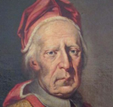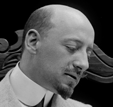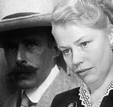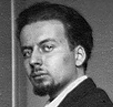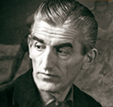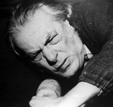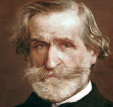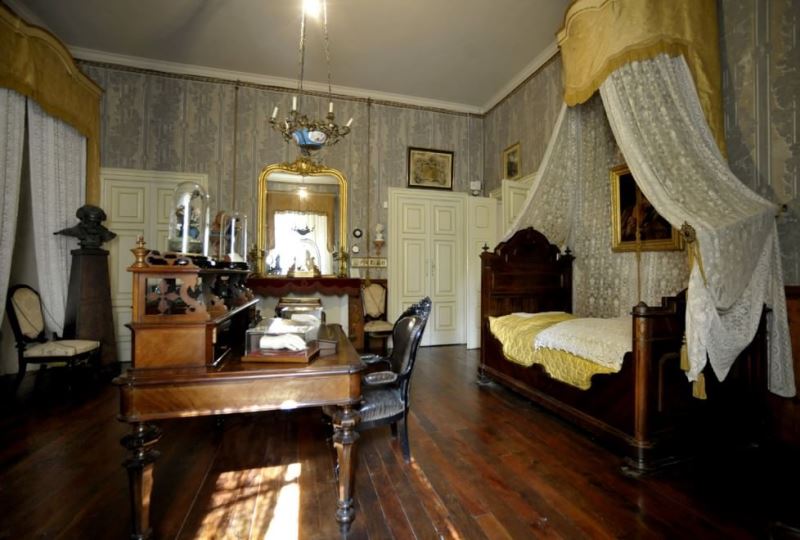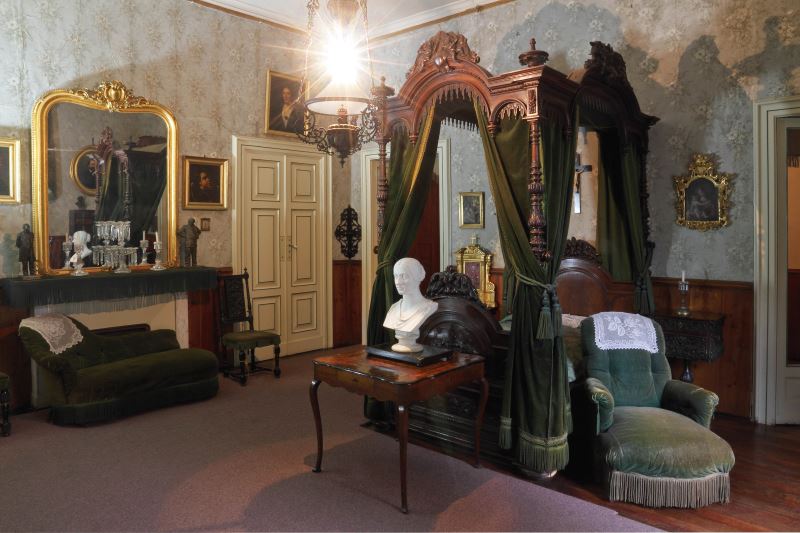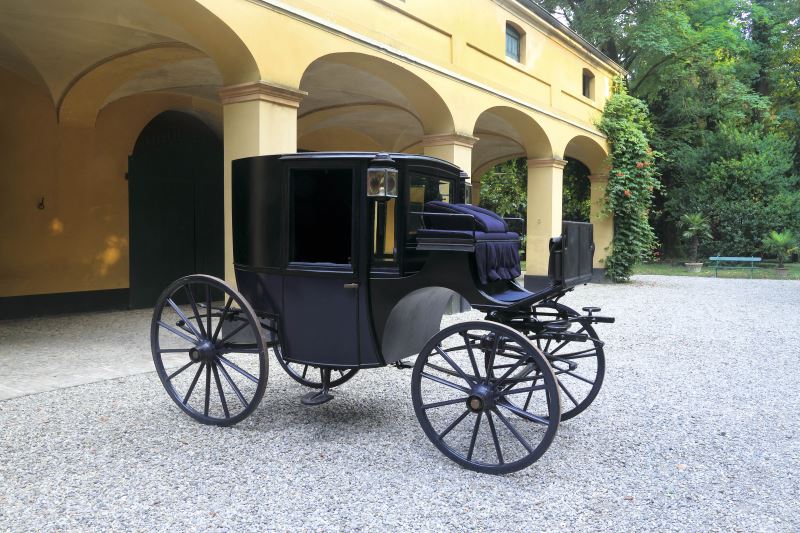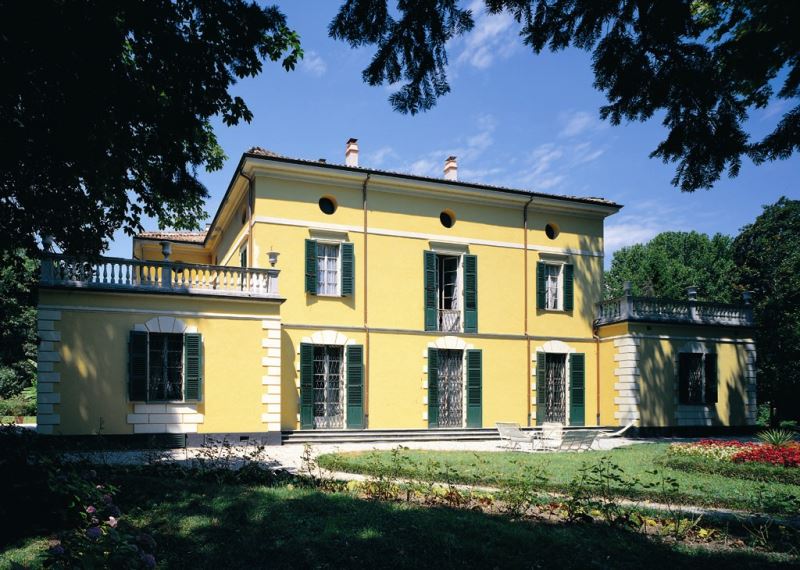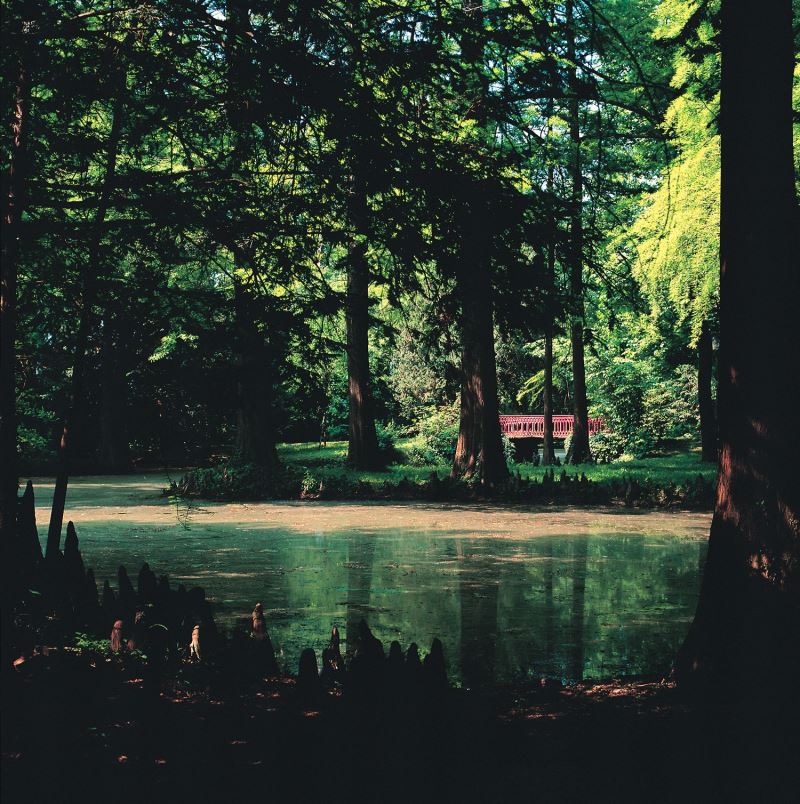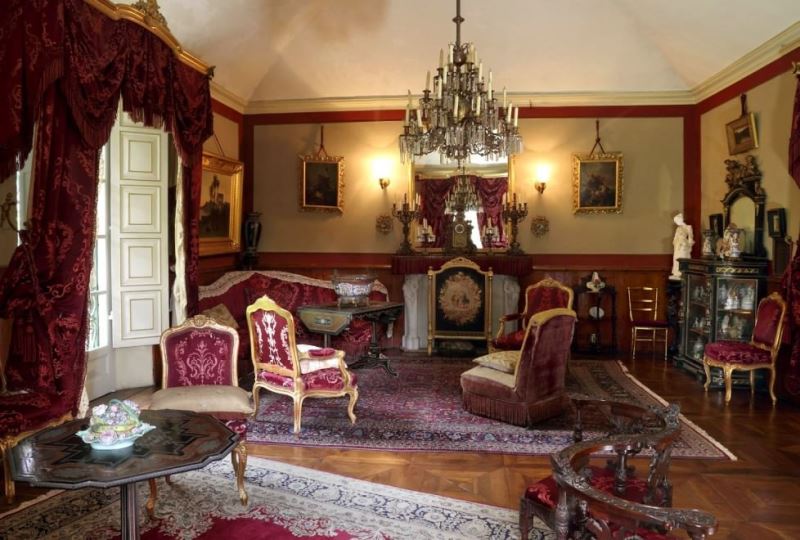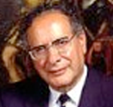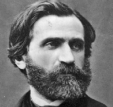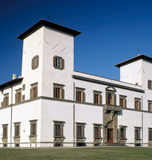
- Address: Villa Le Corti: Via San Piero di Sotto, 1 50026 San Casciano in Val di Pesa (Firenze) +39 055 829301
- Visiting Hours: La casa è visitabile su prenotazione. Sono possibili visite guidate su prenotazione
- Website:
- Contact:
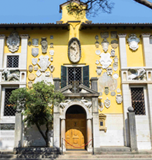
- Address: Fondazione Il Vittoriale degli Italiani via del Vittoriale 12 25083 Gardone Riviera (Bs) Tel. +39 0365 296511 Fax +39 0365 296512
- Website:
- Contact: -
Vittoriale degli Italiani (Gardone Riviera)
Amidst the lake’s tranquillity, d’Annunzio devoted himself to his last great work, which was composed of words and “living stones”, namely the transformation of Villa Cargnacco into the “Vittoriale degli Italiani”, a vast house-museum that he will love like “one of my poems, one of my dramas, any of my political or military acts, any of the proofs of my straight and undefeated faith”.
The Vittoriale is open all year round (except for 24th and 25th December, 1st January).
Summer opening times (from the last Sunday in March to the last Saturday in October)
Entryfrom 9.00 to 19.00
Closes at 20.00
The d'Annunzio the Hero Museum and the Priory can be visited from 10.00 on Mondays
Winter opening times (from the last Sunday in October to the last Saturday in March)
Entry from 9.00 to 16.00
Closes at 17.00
The d'Annunzio the Hero Museum and the Priory are closed on Mondays
To visit the Priory visitors must follow a guided tour which lasts about 30 minutes.
The number of tickets available for the house is limited by the number of guided tours available.
When visiting the d'Annunzio the Hero Museum and the Priory, all bags, cameras and similar accessories must be deposited in the cloakroom (free of charge).
For any other information tel. +39 0365 296521
Hotspots
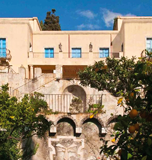
- Address: Casa Cuseni Via Leonardo da Vinci, 5 98039 Taormina ME (Italia)
- Visiting Hours: La casa è visitabile su prenotazione. Sono possibili visite guidate su prenotazione scrivendo all’indirizzo mail
- Website:
- Contact:
Casa Cuseni - Taormina
Hotspots
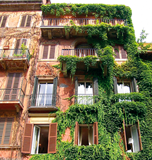
- Address: Museo Casa Scelsi Via di San Teodoro 8 00186 Roma Tel 0669920344
- Visiting Hours: Lunedì – venerdì 9.00 – 14.00 Apertura Archivio Lunedì 9.00 – 14.00 e 14.30 – 16.30 Martedì e mercoledì 9.00 – 14.00 Il giovedì e venerdì su appuntamento Per ottimizzare l’utilizzo delle postazioni dell’Archivio vi invitiamo a concordare le date della vostra presenza Visita al Museo Le visite si effettuano previo appuntamento Orari di apertura: lunedì - venerdì 10.00 - 13.00
- Website:
- Contact:
Roma
Hotspots
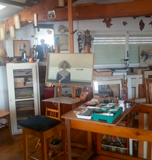
- Address: Segreteria: 0541 622160 Via Don Minzoni, 64 Santarcangelo di Romagna, 47822 Italia
- Visiting Hours: La casa è visitabile su prenotazione. Sono possibili visite guidate su prenotazione
- Website:
- Contact:
Santarcangelo di Romagna
Hotspots
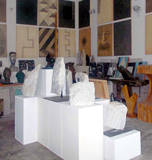
- Address: Casa Venturi - Atelier Venturino Venturi via Martiri della Libertà 7 52024 Loro Ciuffenna, Arezzo tel. 055-9175028 fax 055-0513027 cell. 348-7915877
- Visiting Hours: La casa è visitabile su prenotazione. Sono possibili visite guidate su prenotazione
- Website:
- Contact:
casa venturi
venturino venturi
Loro Ciuffenna (Arezzo)
Hotspots
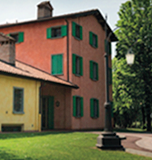
- Address: Casa Museo Luciano Pavarotti Stradello Nava, 6 Modena (MO) - ITALY Telefono: 059 460778
- Visiting Hours: Open daily 10.00 to 18.00 (last admission)
- Website:
- Contact:
Modena
The villa (where he lived the last years of his life) has been designed following the instructions and drawings which Maestro gave to architects and engineers who have supervised the construction.
Even today this home reflects in every detail the personality of the one who imagined it. The house keeps personal items that he loved and contains the memories of his days spent in the company of family, friends and young students.
The visit to this house will enable visitors to experience Pavarotti in the light of its most intimate and warm rooms, to approach gently to his memory knowing his daily habits, finding the man he was once behind the scenes.
You will especially enjoy the costumes so dear to him, pictures and videos that have marked his great artistic career, the countless awards and awards in a career of over forty years in opera houses around the world.
Hotspots
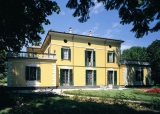
- Address: Via Verdi, 31 Sant’Agata Villanova sull’Arda (PC) Tel. +39 0523 830000 Fax +39 0523 830700
- Website: Villa Verdi
- Contact:
Sant’Agata Villanova sull’Arda
In the Villa you can visit the private rooms of Verdi and his wife.
You can also visit Room 157 at the “Hotel et de Milan”, the hotel near the Scala Theatre, where Verdi died on January 27, 1901 at the age of 87. This site was donated to the museum. In the Villa you can visit the Chapel where, by papal concession, people were able to celebrate Mass, as well as the stables, the cellar, and the carriages used by Verdi. There is also the park, with its exotic plants and the memorial to Lulù, his loyal hound.
Villa Verdi is preserved as it was during the great composer’s time there. It is the place where he wrote music, where he’d receive his select guests, and where he proved his talents as an architect and farmer. The Villa thus provides the key with which we can understand the immortal spirit of Verdi, the man himself as well as his genius.
Currently the Villa is inhabited by the heirs of the musician, the Carrara Verdi family, who are descendants of Maria Filomena Verdi.
Hotspots
Ivan Bruschi - House museum of Antiques - Arezzo
It is in this context should be seen as action at enhancing and increasing the collections owned by the Foundation, in order to remain faithful to the original idea that led to the action of Bruschi throughout his life.
There are two poles of this project:
• The Casa Museo Ivan Bruschi, a "place of wonder" where the cultural and aesthetic conception of Bruschi gave the rooms a strong suggestion, even for the value of the collections on display now restored, cataloged and reorganized after a complex study of the Scuola Normale Superiore di Pisa. The House Museum is now open to the public thanks to the efforts of Banca Intesa Sanpaolo.
• The numismatic exhibition of Ivan Bruschi Foundation. On June 2019 the numanistic corner at the FondazioneIvanBruschi in Arezzo, administrated by Banca Intesa Sanpaolo, opened to the public on a new and more complete exhibition, on the second floor of Palazzo della Fonte. The exhibition edited by FrancaMariaVanni, has two sections: in the first one there are coins and medals part of the Fondazione’s collection, in the second one there are Italian banknotes part of Banca Intesa Sanpaolo’s collection. As well as tourists can enjoy the exhibition, experts can visit it on request. In the first section there are 4000 thousand gold, silver, bronze and mixture coins displayed inside special displays, which were part of Ivan Bruschi’s numismatic collection, founder of the Antique Fair of Arezzo one of the most important in Italy. Such exemplars cover an extended chronological timeline, from the Italic pre-coinage (aes rude) to the 20thcentury. There is Italic and Etruscan coinage, some series melted and coined in the Roman republic, some Greek coinage and emissions of magno-greek cities,the Byzantine coinage with gold and bronze and the Italian mediaeval coinage. To complete the collection there are celebrative and devotional medals, coin weights, coins and seals, all from the medieval and modern time. Among these latter, there are some excellent gold exemplars. In the four rooms of the Fondazione Bruschi numanistic exhibition, inside especially made displayers, were it is possible to admire both faces of the banknotes, there are 1458 exemplars, part of the 9000 banknotes owned by Banca Intesa Sanpaolo. Their disposition follows a chronological path that includes issues made in the several states of the Italian peninsula before the unification. The banknotes issued by the banks before the Banca d’Italia had being established.
.
THE HOUSE MUSEUM OF IVAN BRUSCHI.
Set in the heart of Arezzo, in front of the Parish of St. Mary, in the fourteenth century Palazzo del Capitano del Popolo, the Casa Museo Ivan Bruschi hosts the eclectic collection of the famous antiquarian.
Formed from the early 60s for purchases of previous collections which progressive and objects available on the antiquities market, the collection now has about ten thousand pieces.
Inside the palace, one of the most important public buildings and representative of the city during the Middle Ages, as evidenced by the many emblems affixed to the facade, runs an exhibition that, while showing the predilections of the collector, however, allows to reconstruct the nuclei of the main collection.
Son of art Ivan Bruschi had met while studying Roberto Longhi and enriched with increasingly specific decided to dedicate his life to the protection, enhancement and to collections of artistic heritage, not only Tuscan or Italian.
This flurry of initiatives, also stemmed from growing up in a family where the passion for antiques and art objects was very strong. His father Peter and his older brother, were merchants of antique furniture. The youngest of six children, Ivan Bruschi was born in Castiglion Fibocchi in 1920, but lived for some years with his family in Florence.
In the early '60s, particularly related to his dwelling youth, he returned to live with his sister Dina in Arezzo, in the old Palazzo del Capitano del Popolo, owned by the family since the beginning of the '900 and the tragic Allied bombing of December 1943 had largely destroyed, and put his hand to the restoration of the building.
The choice to stay in Arezzo in 1967 meant that Bruschi opened his antique shop on the premises of the gallery in Piazza San Francesco, in which each month, still welcomes many stands of selected antique dealers, at the Antiques Fair born to Bruschi will of the same in 1968.
A considerable number of archaeological fragments, sculptural and epigraphic, welcome to those who enter in the House Museum: forms and letters decorate the entrance almost to evoke the words and cordial discussions here entertained by the distinguished landlord and his distinguished guests.
The visit is developed in a series of sixteen rooms, spread over three floors, simple and elegant, perfect in every detail, where the effective preparation museological attention consistently emphasizes that the learned Collector had set up in 1996 in the exposition and balanced harmonious of their collections within the walls of the fourteenth century "Arena".
The collections cover a historical path that starts from twenty-two thousand years before Christ, with the precious “Venus of Arezzo”, prehistoric sculpture, but also from archaeological Egyptian, Etruscan, Inca, pre-Columbian and ancient Rome.
The walls are adorned with engravings, drawings and paintings of circles Papacello, Tintoretto, Guido Reni and still Sassoferrato and Luca Giordano, as well as valuable pieces of furniture dating from the fifteenth century until the nineteenth.
Among the Renaissance polychrome sculptures dominate even armor and weapons at the end of the chisel, precious fabrics, lace, liturgical objects, votive offerings and reliquaries, vestments and robes eighteenth century, not to mention jewelry, cameos, coins, medals and seals, bronzes, ivories, porcelains , glass objects, various silver, ceramics, stamps and even desk clocks, scientific instruments, fossils, important documents, incunabula, cinquecentine located in the Studiolo.
A significant selection of books of essays, art are preserved in the library on the second floor, from where you can access a wide multi-level terrace that crowns the building and allows you to live a "face to face" with the face of the magnificent Romanesque church of Santa Maria, characterized by four horizontal registers of stone columns, decorated by a number of reasons both in stems and in capitals, often of archaeological origin and reused.
To continue to grow this culture beyond its borders biographical Bruschi decided in advance to make public use of their home and collections to be stored, through the creation of a foundation.
In his will he established the public Ivan Bruschi Foundation, naming it the heir of his fortunes, so go on, in different forms, his work. By the same act definitively sealed the covenant of trust and collaboration that lasted all his life with "his Bank", delivering "His foundation" perpetual administration of Banca Intesa Sanpaolo.
In December 1996, Ivan Bruschi closed his eyes on world affairs on the upper floor of the Palazzo del Capitano del Popolo, restored along with the treasures kept in the system and open to the public, thanks to the financial commitment of Banca Intesa Sanpaolo.
Works of art, antiques, moods still bring the presence of Bruschi in those old rooms that he loved so much and where every month comes from the nearby streets shouting active and lively than its antiques fair.
THE PALACE OF THE CAPTAIN OF THE PEOPLE OR THE BRAND.
Located opposite the famous Romanesque church of S. Mary, in the upper part of the historic city, which houses the most outstanding memories and secular venues of the city authorities, the Palazzo del Capitano probably gets its name from having been the headquarters of the Guelph party of Arezzo and perhaps the Captain of Justice. Already Lodomei house, the building was then owned by Camaiani, the Guelph family who came into possession in the '300. It is also referred to as the Palace of the Mint since, as shown by documents, at the beginning of the fourteenth century became for a time the residence of the Officers of Gabella and than in the fifteenth century the headquarters of Florentine Public Officers.
The origin of the building dates back to the thirteenth century when it was built on an even older building. The history of the Palazzo del Capitano del Popolo is partly told by the coats of arms on the façade of the building. Those still readable depicting the emblems of the city of Arezzo (golden cross on a red field), the family Camaiani (blue background with a gold band across the top and a red rake with three golden lilies in your teeth) and the City of Florence (the lily). This suggests that in 400 the building was previously owned by the city government and perhaps only after 1384, the year of the end of the independence of Arezzo, there was laid the Mint.
Looking at the Palace can be seen clearly evident the wide wound caused by the bombing that, on 2 December 1943, severely affected the historic center of Arezzo: the original part of the building is clearly recognizable from the one rebuilt in the late '60s by Ivan Bruschi, in the context of an intervention that also involved the reconstruction of the most interior of the ancient building.
The beautiful and austere facade of the Palace of regular blocks of stone, places emphasis on the perspective and the play of light that gives it its unique position on the high slope of the Via dei Pileati. The scans neat and clean appearance of the structure determine the architecture of the palace: the four doorways, one of which is very broad, arched ground floor, the linear frame with simple decoration, the five windows of the main floor, repeating the trend openings earthly, before arriving in the small windows located under the wide eaves, whose space is enhanced by an emphasis on the last string course.
The entrance to the palace confirms the impression of severity is typically Tuscan, which in the dim light of the wide entrance becomes harmonious and austere nobility. The high walls, enhanced by a valuable collection and covered with vaults of stone corbels and the volumetric play of the corridor that follows the first entrance atrium, leading to the cloister-style century, revived in the middle of an ancient well and by a loggia with stone columns from magnificent capitals with acanthus leaves. Following the path of prospective ground floor, which is defined in the distance from the light source of the second courtyard there is access to large covered halls at times. Elegant and always characterized by austerity the halls of the first floor where you can admire the well-preserved wooden ceilings and windows of which has an unusual and extraordinary vision of the Romanesque façade of the church. The presence in the different areas of portals, shelves and stone fireplaces reminiscent of the fifteenth-century structure of the building, in which Ivan Bruschi lived until his death.
Hotspots
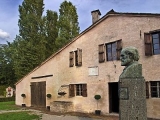
- Address: Via della Processione, 1 Roncole Verdi, Busseto (PR) Tel. 0524.92487 / 0524.801331
- Website:
casamuseo
bussetolive - Contact:
Casa natale (Roncole di Busseto)
As legend has it, because the yearly festivities for the feast of San Donino, the patron saint of the diocese, were underway at his birth, the music played by a group of strolling musicians was a good omen for the future of the newborn baby. According to recent studies, the Verdis were a family of small landowners who were not illiterate; often, in fact, the innkeeper read letters for those who could not. Hence, the legend of the poverty-stricken family, of the uneducated, poor little peasant, of the starving artist, later fuelled by the editor Ricordi, should be re-evaluated.
Yet, to this day, the most evocative place of Verdi, thanks to the important work of recovery and restoration begun in 2013, does not fail to touch the numerous visitors at the thought of the triumphant goals achieved by the composer. Verdi, however, never forgot his own origins and, in 1863, wrote: “I was, am and always will be a peasant from Roncole.” On the front of the house, a commemorative plaque from 1872 reminds us that the marquises Pallavicino, who were the owners, wanted the house to stay as it was. Over time, other commemorative plaques have been put up. One in particular should be recalled; that given by the poor of Roncole who were helped by the Maestro (1901). In 1913, the centennial of his birth, a bronze bust by G. Cantù was placed in the small garden in front of the house.



